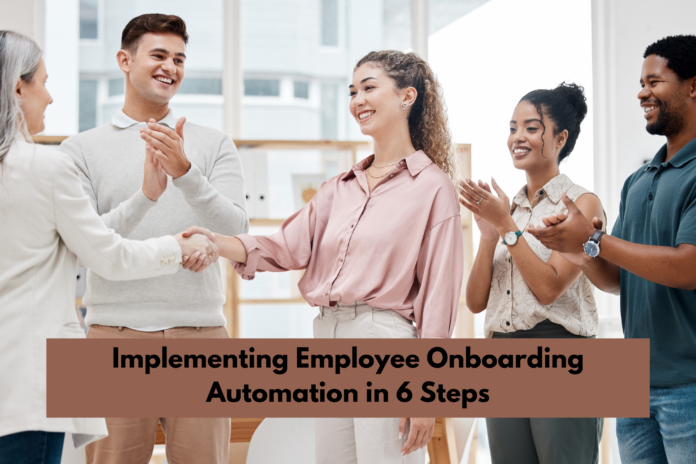Mastering the Transition: Implementing Employee Onboarding Automation in 6 Steps: Before implementing onboarding automation, organizations must recognize the specific needs that automation aims to address. Reducing manual paperwork, enhancing data accuracy, and providing a consistent onboarding and offboarding experience are typical motivators. These factors often drive the decision to consider automation. Assessing the existing onboarding processes is the first critical step.
Identifying inefficiencies within these processes can offer clear insights into potential improvements. Employee onboarding automation can effectively address these inefficiencies. This evolution not only streamlines operations but also enhances the overall effectiveness of the onboarding experience. It ensures a smoother, more efficient introduction for new employees.
Choosing the Right Automation Software for employee onboarding automation process in 6 steps
Choosing the right automation software for employee onboarding automation is a pivotal step in the process. Organizations should opt for solutions that are customizable, scalable, and seamlessly integrated with existing human resources management systems—essential features to consider include automated workflows, self-service portals for new hires, and compliance management tools. Additionally, software that offers analytics and reporting capabilities can provide valuable intuitions into the effectiveness of onboarding processes. Organizations are encouraged to request demonstrations and trial periods from vendors to thoroughly assess how well the software aligns with their specific needs. This evaluation is crucial to ensure that the selected software can adapt to future changes and growth within the company.
Planning the Implementation
A structured approach to implementation of client onboarding automation can significantly enhance the success of an automation project. It involves setting clear objectives, timelines, and responsibilities. Organizations should create a project team that includes stakeholders from HR, IT, and other relevant departments. This team will be accountable for overseeing the project, from initial setup and testing to going live. Detailed planning helps anticipate challenges and arrange necessary resources, ensuring a smooth transition.
Configuring and Customizing the System
Once the right employee onboarding automation software is chosen, configuring it to fit the organization’s specific needs is essential. This includes setting up user roles, permissions, and workflows according to the organization’s onboarding procedures. Customization may also involve tailoring the software to handle specific job roles differently or include company branding in onboarding materials. Effective configuration ensures that the software not only automates tasks but also aligns with the company’s culture and compliance requirements.
Training and Support
Training ensures that HR personnel and other users are comfortable with the new system. Comprehensive training sessions should be conducted to train users with the software’s features and functionalities. Additionally, ongoing support should be arranged through the software provider or an internal support team to address issues as users adapt to the system. Proper training and support reduce resistance from staff and facilitate a smoother transition to the automated processes.
Monitoring and Evaluating the Impact of Employee Onboarding Automation System
After implementation, monitoring the system and evaluating its impact on the employee onboarding automation process is essential. Metrics to monitor include the time taken to onboard new employees, employee satisfaction scores, and error rates in data handling. Feedback should be sought from new hires and HR staff to identify areas for improvement. Regular assessments help fine-tune the system and maximize the benefits of automation.
Implementing employee onboarding automation is a strategic process that, when done correctly, can yield notable benefits for an organization. By following these six steps, companies can ensure a successful change to a more efficient and effective onboarding process. As the workplace continues to evolve, automation in employee onboarding is becoming necessary, providing organizations with a competitive edge in managing their workforce efficiently and effectively. With careful planning and execution, the journey toward automation can lead to a transformation in HR practices that resonates across the entire organization.

